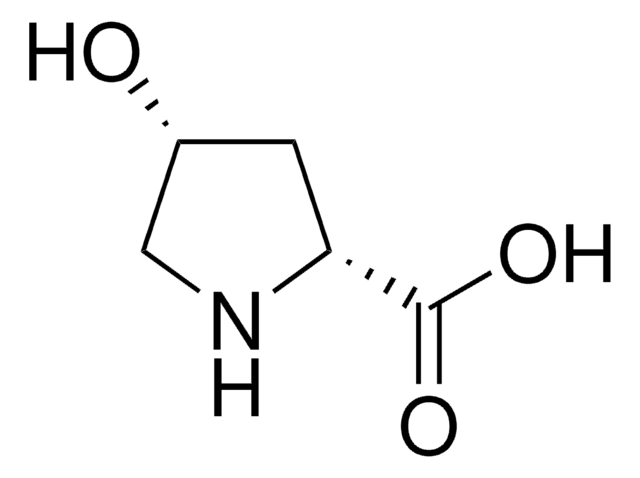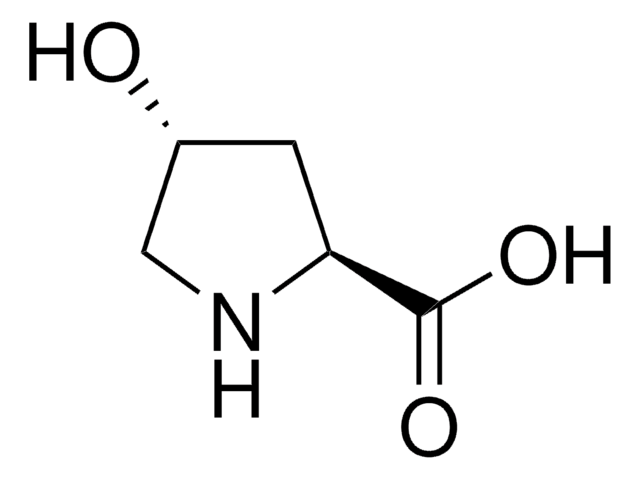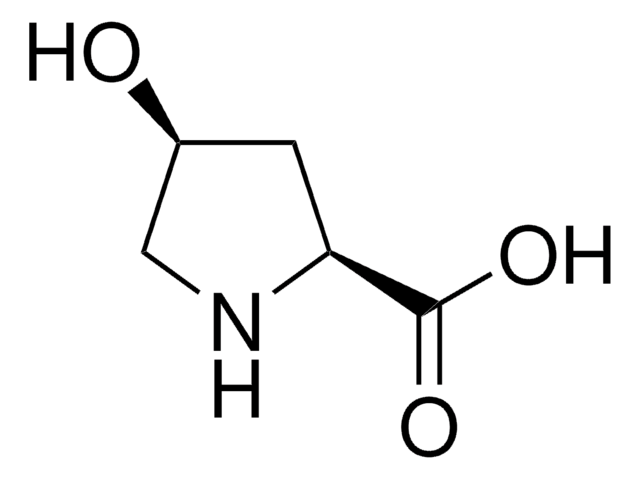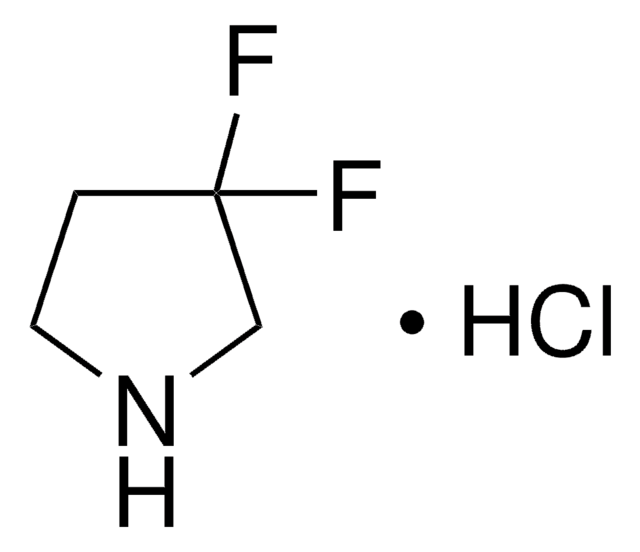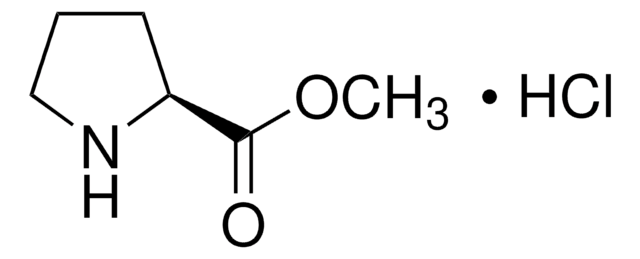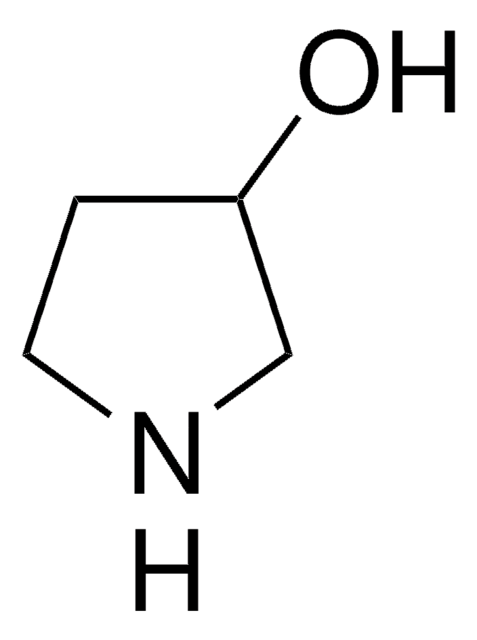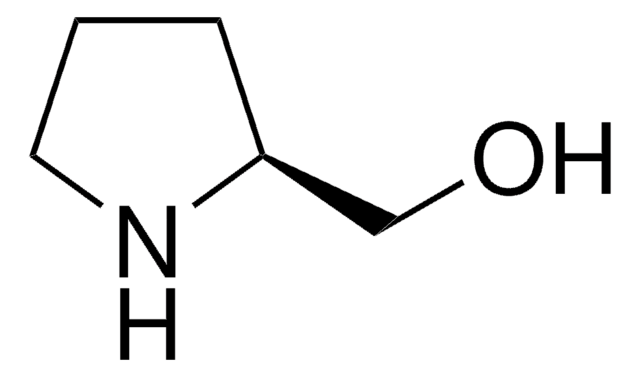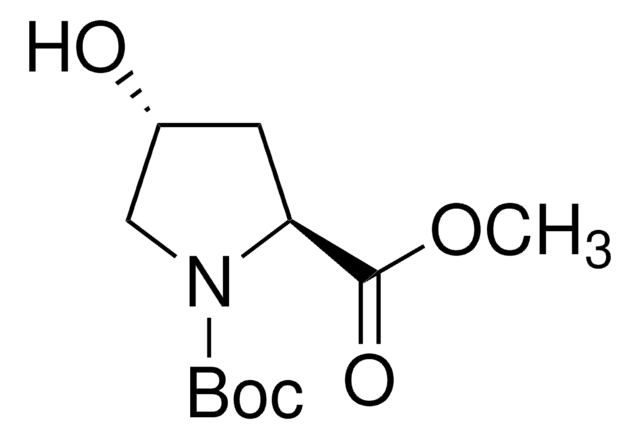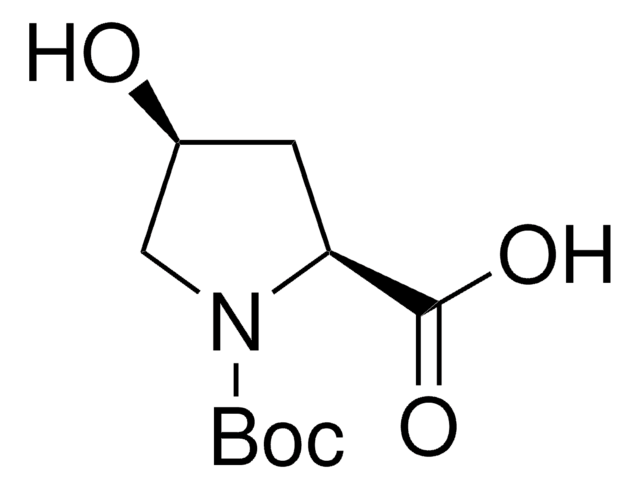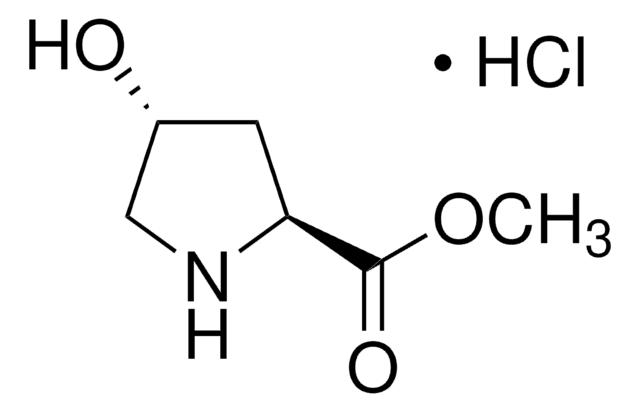702501
trans-4-Hydroxy-D-proline
97%
Synonym(s):
(2R,4S)-4-Hydroxypyrrolidine-2-carboxylic acid
Sign Into View Organizational & Contract Pricing
All Photos(3)
About This Item
Empirical Formula (Hill Notation):
C5H9NO3
CAS Number:
Molecular Weight:
131.13
MDL number:
UNSPSC Code:
12352209
eCl@ss:
32160406
PubChem Substance ID:
NACRES:
NA.22
Recommended Products
Assay
97%
form
powder
reaction suitability
reaction type: solution phase peptide synthesis
mp
261 °C (dec)
application(s)
peptide synthesis
SMILES string
O[C@@H]1CN[C@H](C1)C(O)=O
InChI
1S/C5H9NO3/c7-3-1-4(5(8)9)6-2-3/h3-4,6-7H,1-2H2,(H,8,9)/t3-,4+/m0/s1
InChI key
PMMYEEVYMWASQN-IUYQGCFVSA-N
Signal Word
Danger
Hazard Statements
Precautionary Statements
Hazard Classifications
Acute Tox. 4 Oral - Eye Irrit. 2 - Resp. Sens. 1 - Skin Irrit. 2 - STOT SE 3
Target Organs
Respiratory system
Storage Class Code
11 - Combustible Solids
WGK
WGK 3
Flash Point(F)
Not applicable
Flash Point(C)
Not applicable
Personal Protective Equipment
dust mask type N95 (US), Eyeshields, Gloves
Regulatory Information
新产品
Choose from one of the most recent versions:
Already Own This Product?
Find documentation for the products that you have recently purchased in the Document Library.
Ashley C Campbell et al.
Archives of biochemistry and biophysics, 698, 108727-108727 (2020-12-18)
Proline utilization A (PutA) proteins are bifunctional proline catabolic enzymes that catalyze the 4-electron oxidation of l-proline to l-glutamate using spatially-separated proline dehydrogenase and l-glutamate-γ-semialdehyde dehydrogenase (GSALDH, a.k.a. ALDH4A1) active sites. The observation that l-proline inhibits both the GSALDH activity
Takenori Satomura et al.
Applied microbiology and biotechnology, 99(10), 4265-4275 (2014-12-05)
A gene from the thermophilic Gram-negative bacterium Rhodothermus marinus JCM9785, encoding a dye-linked D-amino acid dehydrogenase homologue, was overexpressed in Escherichia coli, and its product was purified and characterized. The expressed enzyme was a highly thermostable dye-linked D-amino acid dehydrogenase
István Ilisz et al.
Journal of chromatography. A, 1363, 169-177 (2014-07-20)
Two chiral stationary phases containing a quinine- or a quinidine-based zwitterionic ion-exchanger as chiral selector were applied for the enantioseparation of 27 unusual cyclic secondary α-amino acids. The effects of the nature and concentration of the bulk solvent, the acid
Our team of scientists has experience in all areas of research including Life Science, Material Science, Chemical Synthesis, Chromatography, Analytical and many others.
Contact Technical Service